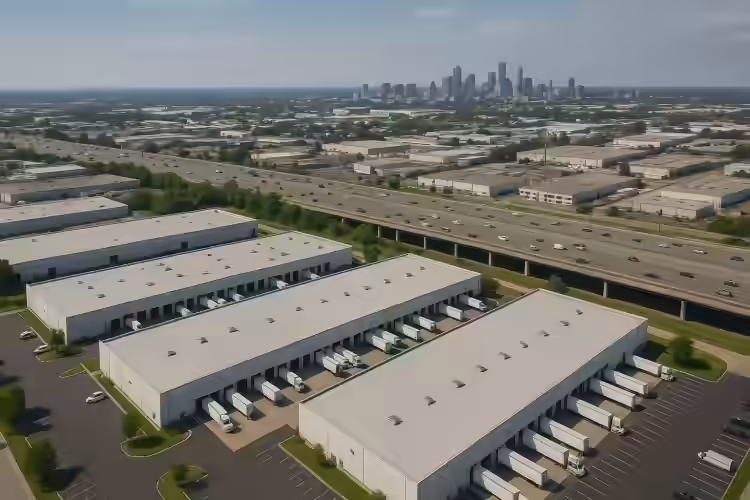How Location Impacts Industrial Rent Prices
Why Location Drives Cost
Industrial real estate isn’t a one-size-fits-all game. If you’re leasing warehouse or distribution space, the biggest pricing lever—by far—is location. And we're not just talking about city vs. suburb. We're talking zip code, freeway access, port proximity, even which side of the railroad tracks you're on.
Why? Because location dictates your access to customers, suppliers, labor, and transportation. And in logistics, every mile matters.
Here’s the thing: two warehouses that look nearly identical—same square footage, same ceiling height, same loading docks—can rent for wildly different prices based solely on where they’re located. One could go for $6 per square foot, and the other? $18. No joke.
So what gives? Let’s dig into the details that drive those price tags.
Proximity to Transport Hubs
First up: transportation access. This one’s huge.
Being near major highways, airports, rail yards, or ports can seriously drive up rents. Why? Because you're shaving time and cost off every shipment. And for high-volume operations, that adds up fast.
Take Los Angeles, for example. Industrial space near the Port of LA or LAX commands premium prices. You're looking at $20+ psf in some submarkets. But move 40 miles inland to Ontario, and you might find similar space for half the cost.
The same holds true in Chicago: industrial sites near O'Hare fetch more because they serve both air and road freight within minutes.
If you need fast turnarounds or last-mile fulfillment, you’ll pay a premium for being close. But if you're shipping bulk goods or can tolerate an extra 30–60 minutes in transit, moving out can save you serious cash.
Urban vs. Suburban Industrial Markets
Now let’s talk urban versus suburban.
Urban industrial space is hot—and expensive. The rise of e-commerce has pushed demand for last-mile facilities right into the heart of major cities. Problem is, there’s just not a lot of available land. And when space *is* available, it’s often older, smaller, and more costly per square foot.
Take New York City. Warehouse space in Brooklyn or Queens can run $25–$30 psf—or more. But drive out to East Rutherford, New Jersey, and you're looking at closer to $12–$15.
In San Francisco, same deal. High rents in the city itself. But head to the East Bay—say, Fremont or Tracy—and the price drops.
Of course, suburban locations come with trade-offs. Cheaper rent, yes. But longer delivery times, tougher commutes, and sometimes less labor access. It’s all about priorities.
Regional Demand and Supply
Zooming out a bit, rent prices also depend on the broader regional market.
Some cities just have higher industrial demand—and less available inventory. That drives prices up.
Look at Dallas. It’s a national logistics hub with strong population growth and lots of e-commerce fulfillment. Industrial vacancy rates are tight, and rents have climbed accordingly.
Phoenix and Nashville are seeing similar trends. Booming populations, limited supply, and big-name tenants (like Amazon) soaking up space.
By contrast, older Rust Belt cities—like Cleveland or Detroit—may offer more affordable industrial rents thanks to higher vacancies and more aging inventory.
So if you’re flexible on location, shopping different metros could cut your cost dramatically.
Labor Pools and Zoning Restrictions
Here’s something a lot of folks miss: the impact of local labor and zoning.
Some areas have a large, skilled industrial workforce. Others? Not so much. Areas with better access to blue-collar labor often attract more tenants—which pushes rents higher.
Zoning is the other wild card. Cities with tight zoning rules often have less buildable industrial land, which limits supply. That’s one reason rents in Seattle and Boston have spiked—there just isn’t enough available land that’s zoned industrial.
In contrast, cities that are more pro-development (think Houston, Las Vegas, Charlotte) can often deliver cheaper rents thanks to looser regulations and more land for development.
Bottom line: zoning and workforce access are huge invisible factors behind the sticker price.
Market Comparisons Across U.S. Cities
So what do industrial rent prices actually look like in different U.S. markets? Here’s a quick snapshot as of early 2025 (note: these vary by submarket and building class):
- Los Angeles, CA: $20–$30 psf (high demand, low supply near ports)
- Dallas, TX: $6–$9 psf (central U.S. location, strong supply pipeline)
- Atlanta, GA: $5–$8 psf (major logistics hub)
- Miami, FL: $12–$18 psf (port proximity, last-mile competition)
- Chicago, IL: $7–$11 psf (O’Hare demand keeps airport zones pricey)
- Phoenix, AZ: $9–$12 psf (booming e-commerce growth)
Navigating Your Options Smartly
So, how do you use this info when hunting for a warehouse or distribution center?
Start by being honest about what you *need* versus what you *want*.
If you need 24/7 access to an airport or port, expect to pay more for location. But if your shipments are more flexible, or you can do bulk fulfillment instead of last-mile delivery, then looking further out can slash your rent.
Also consider your workforce. Are you hiring drivers? Packers? Forklift operators? Make sure the site is commutable for them. That could mean higher rent, but lower labor headaches.
Finally, don’t forget about expansion plans. Paying a little more now for a flexible, well-located site might save you from an expensive relocation 18 months down the line.
Conclusion
The industrial market is all about location. Always has been, always will be.
But it’s not just about being close to the action—it’s about being *strategically* close. Whether that’s a port, a freeway, or your labor pool, where you place your business will shape your costs and your operational efficiency.
So before you sign that lease, map it all out. Look at your routes. Talk to your broker. Run the numbers.
Because the right location doesn’t just save you money—it helps you move faster, grow smarter, and stay competitive in a supply chain that never sleeps.

